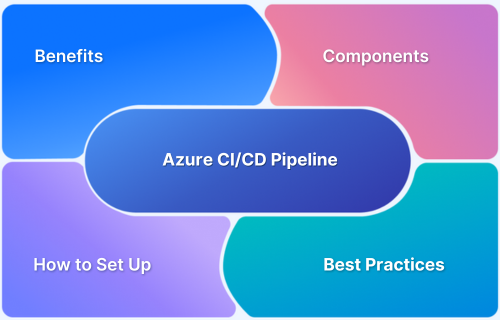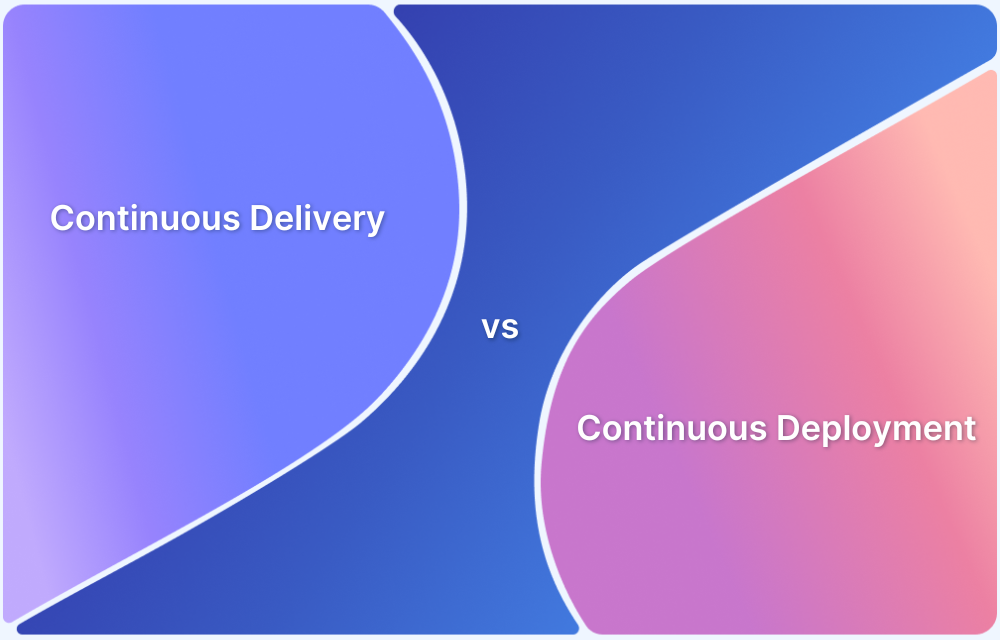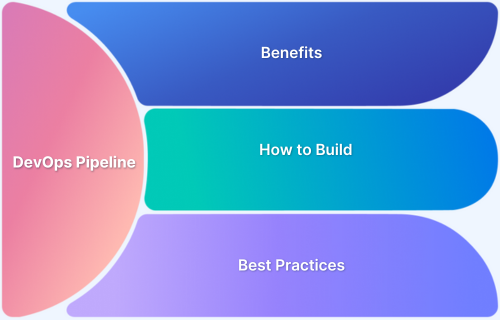What is a Deployment Pipeline and How to Build it?
November 21, 2024
A deployment pipeline is an essential DevOps testing strategy that automates the software delivery process, ensuring rapid and reliable application deployments. It provides a structured approach for integrating, testing, and releasing code changes, allowing teams to detect and resolve issues early.
This article explores the concept of a deployment pipeline, its benefits, key components, main stages, how to build one, and popular tools to implement it effectively.
- What is a Deployment Pipeline?
- Benefits of a Deployment Pipeline
- Key Components of a Deployment Pipeline
- Main Stages of a Deployment Pipeline
- Build Pipeline vs Deployment Pipeline
- What are CI/CD Pipelines?
- How to Build a Deployment Pipeline?
- Deployment Pipeline Tools
- Challenges in creating a deployment pipeline and how to overcome
What is a Deployment Pipeline?
A Deployment Pipeline is an automated workflow that takes code changes from development through to production. It consists of stages, such as building, testing, and deploying, to ensure the software is correctly integrated, verified, and ready for release.
Each step in the pipeline checks code quality and functionality to catch issues early. It improves the speed, reliability, and safety of deployments.
Benefits of a Deployment Pipeline
The key benefits of a well-implemented deployment pipeline are listed below:
- First and foremost, it enables faster time-to-market for new features and bug fixes by automating and expediting the software delivery process.
- The pipeline allows for early detection and resolution of defects, reducing the risk of deployment failures and costly rollbacks.
- It fosters collaboration between development, testing, and operations teams, promoting a culture of shared responsibility and continuous improvement.
- Automated processes reduce manual interventions, enabling faster and more frequent releases, accelerating time-to-market for new features and bug fixes.
- Automation testing at each stage ensures that bugs and issues are identified early in the development cycle, minimizing the cost and effort of fixing them.
- The pipeline ensures consistency across all environments, reducing the chances of configuration errors that may cause discrepancies between development, staging, and production environments.
- Deployment pipelines encourage collaboration between development, testing, and operations teams, promoting a culture of shared responsibility and faster feedback loops.
- Automated testing and validation processes help catch issues before they reach production, leading to fewer deployment failures and rollbacks.
- Continuous integration and automated security checks ensure that code meets security and compliance standards before deployment.
Read More: Difference between CI, CD, Agile and DevOps
Key Components of a Deployment Pipeline
The key components of a deployment pipeline are essential building blocks that enable the automation and smooth flow of code changes from development to production. These components work together to ensure the continuous integration, testing, and deployment of software, resulting in efficient and reliable software releases. The main components of a deployment pipeline include:-
- Version Control System (VCS): It is a central repository that tracks and manages code changes made by developers. It allows multiple developers to collaborate on the same codebase, facilitates versioning, and provides a historical record of changes. Popular VCS options include Git, SVN, and Mercurial.
- Build Server: It is responsible for automatically compiling and packaging the code whenever changes are pushed to the VCS. It takes the code from the repository and transforms it into executable artifacts that are ready for testing and deployment. Continuous integration tools like Jenkins, GitLab CI/CD, and Travis CI are often used to set up build servers.
- Automated Testing: It includes various types of tests, such as unit tests, integration tests, functional tests, and performance tests. Automated testing ensures that any defects or issues are caught early in the development process, reducing the risk of introducing bugs into production.
- Artifact Repository: The artifact repository stores the build artifacts generated by the build server. These artifacts are the build process output and represent the compiled and packaged code ready for deployment. A centralized artifact repository ensures consistent and reliable deployments across different environments, such as staging and production.
- Deployment Automation: Deployment automation streamlines the application deployment process to various environments. It involves setting up automated deployment scripts and configuration management tools to ensure a consistent deployment process. By automating the deployment process, organizations can reduce manual errors and maintain high consistency in their deployments.
By integrating these key components into a well-designed deployment pipeline, software development teams can achieve faster, more reliable, and higher-quality software releases.
Main Stages of a Deployment Pipeline
A deployment pipeline consists of a series of automated stages that code changes must pass through before being deployed to production. Each stage is designed to verify the quality, functionality, and compatibility of the code, ensuring that the software release is efficient, and reliable, and maintains consistent quality across different environments.
We will explore the main stages of a deployment pipeline and their significance in the software development process.
Stage 1: Commit Stage:
The deployment pipeline starts with the Commit stage, triggered by code commits to the version control system (VCS). In this stage, the code changes are fetched from the VCS, and the build server automatically compiles the code, running any pre-build tasks required. The code is then subjected to static code analysis to identify potential issues, such as coding standards violations or security vulnerabilities. If the code passes these initial checks, the build artifacts are generated, which serve as the foundation for subsequent stages.
Stage 2: Automated Testing Stage:
After the successful compilation and artifact generation in the Commit stage, the next stage involves automated testing. Various tests are executed in this stage to ensure the code’s functionality, reliability, and performance.
- Unit tests, which validate individual code components, are run first, followed by integration tests that verify interactions between different components or modules.
- Functional tests check whether the application behaves as expected from an end-user perspective.
Stage 3: Staging Deployment:
The application is deployed to a staging environment once the code changes have successfully passed the automated testing stage. The staging environment resembles the production environment, allowing for thorough testing under conditions that simulate real-world usage. This stage provides a final check before the application is promoted to production.
Stage 4: Production Deployment:
The final stage of the deployment pipeline is the Production Deployment stage. Once the application has passed all the previous stages and received approval from stakeholders, it is deployed to the production environment.
- This stage requires extra caution as any issues or bugs introduced into the production environment can have significant consequences.
- To minimize risk, organizations often use deployment strategies such as canary releases, blue-green deployments, or feature toggles to control the release process and enable easy rollback in case of any problems.
- Continuous production environment monitoring is also essential to ensure the application’s stability and performance.
Build Pipeline vs Deployment Pipeline
A Build Pipeline focuses on compiling code and preparing it for testing, while a Deployment Pipeline handles the stages required to release tested code into production.
| Aspect | Build Pipeline | Deployment Pipeline |
|---|---|---|
| Primary Focus | Compiling code and creating an executable build | Releasing code to production environments |
| Key Stages | Code compilation, dependency management, unit testing | Acceptance testing, staging deployment, production deployment |
| End Goal | Produces an artifact ready for further testing | Deploys a stable, tested build to users |
| Automation Level | Often fully automated for frequent integration | May include approvals or manual steps, especially for production |
| Trigger | Typically triggered on code commit or merge | Triggered after build pipeline success and further validations |
| Tools Used | Build tools like Maven, Gradle, or npm | Deployment tools like Jenkins, AWS CodePipeline, GitLab CI |
| Involves Testing? | Mostly unit and integration tests | Focuses on staging, acceptance, and post-deployment monitoring |
What are CI/CD Pipelines?
CI/CD Pipelines (Continuous Integration/Continuous Delivery/Continuous Deployment) are automated workflows that streamline and automate the process of building, testing, and deploying code. They ensure that changes to an application are quickly and reliably integrated, tested, and delivered to production, minimizing manual intervention and reducing the risk of errors.
In a CI/CD pipeline:
- Continuous Integration (CI): Automatically integrates and tests code changes from multiple developers, catching issues early and ensuring stability before deployment.
- Continuous Delivery (CD): Automates the process of preparing code for release, deploying it to a staging environment for final validation.
- Continuous Deployment (CD) (if implemented): Automatically deploys validated code changes to production, enabling faster releases to end-users.
CI/CD pipelines improve development speed, code quality, and release consistency, making them a key practice in Agile and DevOps workflows.
Read More: Continuous Delivery vs Continuous Deployment
How to Build a Deployment Pipeline?
Building a deployment pipeline is crucial in the software development and DevOps process. It helps automate and streamline the process of deploying code changes from development to production environments.
Here’s a step-by-step guide on how to build a deployment pipeline:
Step 1. Define Your Pipeline Requirements
- Identify your project’s requirements, including target environments (development, testing, staging, production), technologies, and tools.
- Decide on the frequency of deployments (continuous deployment, continuous integration, etc.).
Step 2. Select a Version Control System (VCS)
- Use a version control system like Git to manage your source code and track changes.
Step 3. Choose a Build Automation Tool:
- Select a build tool like Jenkins, Travis CI, CircleCI, or GitLab CI/CD to automate the build and testing process.
Step 4. Setup Continuous Integration (CI)
- Configure your chosen CI tool to monitor your VCS repository for changes and trigger builds automatically.
- Set up build scripts or configuration files (e.g., Jenkinsfile, travis.yml) to define build steps and dependencies.
Step 5. Automate Testing
- Integrate unit, integration, and functional tests into your pipeline.
- Ensure that the pipeline fails if any tests do not pass, preventing code with issues from progressing further.
Step 6. Artifact Generation
- Create deployable artifacts (e.g., Docker images, JAR files) from your codebase after successful testing.
Step 7. Implement Continuous Deployment (CD):
- Set up deployment stages for different environments (e.g., staging, production).
- Use infrastructure as code tools.
Building a deployment pipeline is an iterative process. You’ll continuously fine-tune and optimize your pipeline to meet the changing needs of your project and organization. It’s essential to maintain a strong collaboration between development, testing, and operations teams throughout the pipeline’s lifecycle.
Deployment Pipeline Tools
There are several popular deployment pipeline tools available that facilitate the automation and orchestration of the software delivery process. These tools help set up continuous integration, continuous deployment, and continuous delivery pipelines, ensuring a streamlined and efficient development workflow.
Here are some widely used deployment pipeline tools:
- Jenkins: Jenkins’s rich plugin ecosystem allows customization and integration with various tools, enhancing its adaptability to diverse development environments. The integration of Jenkins with BrowserStack is easy and impactful.
- GitLab CI/CD: GitLab CI/CD automates software integration, testing, and deployment within the GitLab platform, streamlining development workflows. BrowserStack offers seamless integration with GitLab, facilitating efficient cross-browser and device compatibility testing.
- Travis CI: Travis CI specializes in automating build, test, and deployment workflows, ensuring continuous integration and delivery.
- CircleCI: It is a robust automation tool in the software development realm. It excels in automating build, test, and deployment procedures, fostering a seamless continuous integration and delivery environment.
- GitHub Actions: It stands as a potent force in automating software development workflows. Its core strength lies in automating build, test, and deployment operations, creating a smooth ecosystem for continuous integration and delivery. Complementing this power,
See all BrowserStack Integrations
Challenges in creating a deployment pipeline and how to overcome
Creating a deployment pipeline can be challenging, but understanding common obstacles and strategies to overcome them helps ensure smooth implementation.
- Complexity in Tool Integration
Integrating multiple tools for source control, build automation, testing, and deployment can become complex and error-prone.
Solution: Choose a CI/CD platform that supports a wide range of integrations (for example, Jenkins, GitLab CI/CD). Standardize tools across teams to reduce incompatibility issues and simplify maintenance.
- Managing Environment Configurations
Configurations can vary widely between development, staging, and production, leading to inconsistencies.
Solution: Use configuration management tools like Ansible, Chef, or environment variables, and store configurations in version control. Adopt infrastructure-as-code (IaC) practices for consistency.
- Ensuring Security and Compliance
Deployment pipelines may expose sensitive information and need to meet compliance standards.
Solution: Encrypt sensitive data, use secure secrets management tools (for example, HashiCorp Vault), and implement access controls. Regularly audit pipeline configurations for compliance with security policies.
- Testing Bottlenecks
Slow or insufficient testing can cause delays and impact release quality.
Solution: Use parallel testing and prioritize automated testing (unit, integration, and acceptance). Invest in test management tools that integrate with CI/CD pipelines for better test efficiency.
- Handling Rollbacks
Rolling back deployments can be complex, especially if data or configurations are involved.
Solution: Implement version control for configurations and deploy applications using blue-green or canary deployments, which simplify rollback if issues arise.
- Monitoring and Troubleshooting Failures
Issues within the pipeline or in production can be difficult to track and troubleshoot.
Solution: Set up logging and monitoring tools (for example, Prometheus, ELK Stack) to capture real-time metrics and logs. Alerting systems can also notify teams of critical issues as they arise.
- Resistance to Automation
Teams may be resistant to adopting automation, preferring familiar manual processes.
Solution: Demonstrate the benefits of automation, such as faster releases and reduced errors. Start with small automation steps, gradually increasing complexity as teams become more comfortable.
Conclusion
Deployment pipelines enable teams to build, test, and deploy code quickly, reliably, and with reduced manual effort. By automating each step, pipelines improve code quality, catch issues early, and speed up the release cycle.
BrowserStack’s integration with major CI/CD tools like Jenkins, GitLab, and CircleCI enables to have a seamless deployment workflow . With BrowserStack, you can automate testing in real device environments across various browsers and operating systems, ensuring high-quality releases with every deployment.




